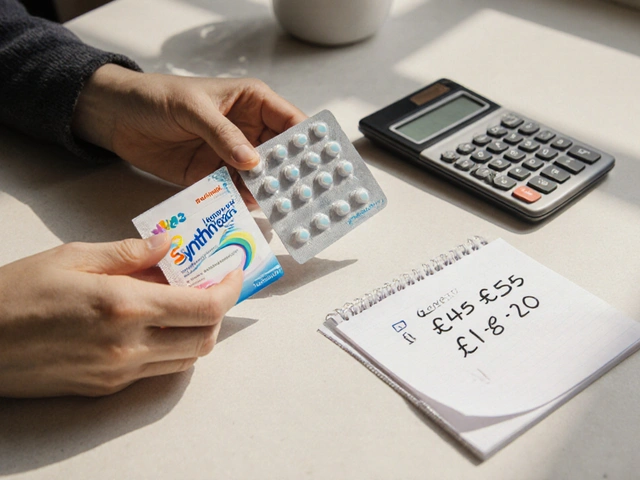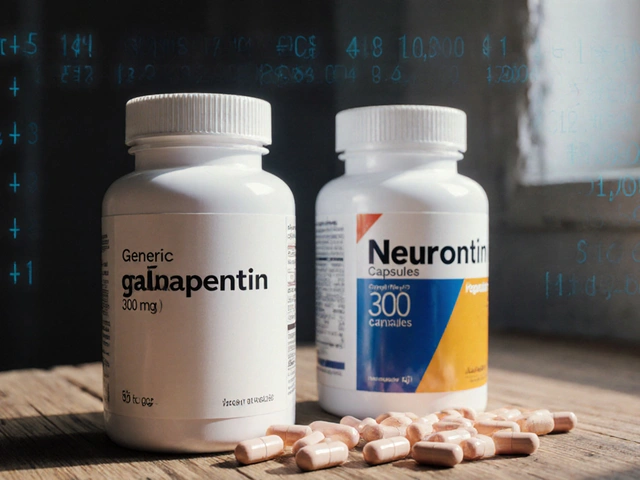Ever felt the room spin while you’re mid‑run or powering through a HIIT session? That sudden light‑headedness can shatter motivation and even turn a regular workout into a risky ordeal. Below you’ll find the practical steps to keep that unsettling feeling at bay, so you can stay focused on your goals rather than on the ceiling fan.
Key Takeaways
- Hydrate before, during, and after exercise - aim for 500ml per hour of activity.
- Eat a balanced snack 30‑60 minutes before moving, especially if you’re training fasted.
- Warm‑up gradually, breathe rhythmically, and maintain upright posture.
- Monitor intensity with heart‑rate zones or perceived exertion; don’t jump straight to max effort.
- Seek medical advice if dizziness persists despite lifestyle tweaks.
What Triggers Exercise‑Induced Dizziness?
Exercise‑induced dizziness is the sensation of light‑headedness or loss of balance that occurs while you are physically active. It’s not magic; the body is sending clear signals that something needs adjusting. Here are the most common culprits:
- Dehydration - Sweating faster than you replace fluids drains blood volume, lowering blood pressure.
- Low blood sugar - Muscles burn glucose quickly; without a pre‑workout snack, the brain gets starved.
- Overexertion - Jumping straight into high intensity overwhelms cardiovascular control.
- Improper breathing - Holding your breath or shallow breaths reduce oxygen delivery.
- Postural shifts - Moving from lying down to standing too fast can cause orthostatic drops.
- Environmental factors - Heat, humidity, or overly cold rooms stress the circulatory system.
- Medications or medical conditions - Some drugs, anemia, or inner‑ear disorders affect balance.
Stay Hydrated, Keep the Balance
Dehydration is a state where the body loses more water than it takes in, leading to reduced blood volume and impaired thermoregulation. The simplest fix is a hydration plan that matches your sweat rate.
- Sip 200‑250ml of water 20minutes before you start.
- During exercise, aim for 150‑250ml every 15minutes. In hot climates, add a sports drink with 6‑8g of electrolytes per liter.
- Post‑workout, replace each kilogram of body weight lost with about 1.5liters of fluid.
Feel the urge to pee? That’s a good sign the kidneys are processing the fluid you’ve consumed.
Fuel Up to Prevent Low Blood Sugar
Low blood sugar is a temporary drop in glucose levels that can cause weakness, shakiness, and dizziness. A small carb‑protein combo 30‑60minutes before moving keeps the engine humming.
- Banana with a spoonful of peanut butter (≈30g carbs, 8g protein).
- Greek yogurt with honey and berries.
- Whole‑grain toast with avocado for longer‑lasting energy.
If you train early in the morning on an empty stomach, add a half‑cup of oatmeal or a granola bar to avoid that mid‑session crash.
Warm‑Up, Breathe, and Keep Good Posture
Improper breathing is a pattern of shallow or held breaths that limits oxygen intake and raises blood pressure spikes. Pairing a proper warm‑up with rhythmic breathing steadies heart rate and oxygen flow.
- Start with 5‑10minutes of low‑intensity cardio - brisk walk, easy cycling, or dynamic stretches.
- Incorporate diaphragmatic breathing: inhale through the nose for a count of four, expand the belly, then exhale through the mouth for a count of six.
- Keep the spine neutral; avoid hunching over weights or slouching on the bike.
- When transitioning from lying or seated to standing, pause for a breath and let the blood settle.

Modulate Intensity - Know Your Limits
Overexertion is pushing the cardiovascular system beyond its current conditioning, leading to rapid heart‑rate spikes and reduced cerebral perfusion. Use one of these methods to stay in a safe zone:
- Heart‑rate monitoring: Aim for 60‑75% of max HR for steady‑state cardio (220-age).
- Rate of Perceived Exertion (RPE): Scale of 1‑10; keep your effort around 5‑6 for most sessions.
- Interval pacing: Alternate 1‑minute high effort with 2‑minute recovery; never jump to a full sprint without a warm‑up block.
When to Seek Professional Help
If dizziness continues despite hydration, nutrition, and pacing, it could be a sign of an underlying issue.
- Check blood pressure; low readings (<90/60mmHg) after exercise warrant a doctor’s visit.
- Screen for anemia, thyroid disorders, or vestibular problems if you notice vertigo or ringing in the ears.
- Review any medication side‑effects with your pharmacist - beta‑blockers and certain diuretics can blunt heart‑rate response.
Getting a professional assessment early can prevent unnecessary setbacks and keep you training safely.
Quick Checklist to Keep Dizziness at Bay
- Hydrate: 200ml water before, 150ml every 15min, 1.5L after.
- Snack: 30‑60min pre‑workout, balanced carbs+protein.
- Warm‑up: 5‑10min low‑intensity + dynamic stretches.
- Breathe: Diaphragmatic pattern, exhale longer than inhale.
- Posture: Keep spine neutral; avoid sudden standing.
- Intensity: Use heart‑rate zone or RPE 5‑6 for most days.
- Environment: Dress for temperature, consider cooling towels in heat.
- Medical: Seek advice if symptoms persist >2weeks.
Understanding the Core Factors - A Table Overview
| Trigger | Why It Happens | Quick Fix |
|---|---|---|
| Dehydration | Reduced blood volume lowers pressure. | Drink 200ml water every 15min; add electrolytes. |
| Low Blood Sugar | Glucose supply runs out. | Eat a carb‑protein snack 30min before. |
| Sudden Postural Change | Blood pools in legs, brain starved. | Pause, breathe, rise slowly. |
| Overexertion | Heart can’t keep up with demand. | Use heart‑rate zones; add recovery intervals. |
| Improper Breathing | Oxygen intake drops. | Practice diaphragmatic breathing. |
| Extreme Temperatures | Body struggles to regulate heat. | Dress appropriately; use cooling towels. |
Frequently Asked Questions
Can I still drink coffee before a workout?
A moderate cup (≈150mg caffeine) can boost focus, but pair it with water and a small carb snack to avoid a sugar crash that may trigger dizziness.
Is it safe to skip the warm‑up if I’m short on time?
Skipping the warm‑up raises the risk of sudden blood‑pressure drops and muscle tightness, both of which can cause dizziness. Even a 3‑minute light jog helps.
What if I get dizzy only during high‑intensity interval training (HIIT)?
HIIT pushes heart rate quickly, so monitor intensity with a heart‑rate watch, keep hydration close, and consider lengthening the recovery periods by 10‑15 seconds.
Should I see a doctor if I feel dizzy after every workout?
Yes. Persistent dizziness could signal blood‑pressure issues, anemia, or an inner‑ear condition. A medical checkup will rule out serious causes.
Can supplements help prevent dizziness?
Electrolyte powders containing sodium, potassium, and magnesium can be useful in hot climates. However, they’re not a substitute for water and balanced meals.






Leo Adi
Been there. Did the whole 'fall over in the gym like a sack of potatoes' thing last month. Turns out I was chugging coffee on an empty stomach and thinking that was 'fuel'. Rookie mistake. Now I eat a banana and drink water before I even touch the weights. Life-changing.
Melania Rubio Moreno
why do u even workout?? like i get it u wanna be ‘fit’ but if u get dizzy then maybe ur body’s just sayin ‘nah’?? maybe just walk??
Gaurav Sharma
Hydration advice is statistically insignificant without sweat rate measurements. You cannot generalize 500ml/hour across diverse body compositions. This article is dangerously oversimplified. Also, ‘banana with peanut butter’ is a glycemic disaster for insulin-resistant individuals. You are promoting metabolic chaos.
Jonah Thunderbolt
OMG YES!!! 🙌 I literally almost passed out during spin class last week 😭 I was like ‘is this a cult??’ and then I remembered-I skipped breakfast and drank 3 espressos. 🤦♂️ Now I eat oatmeal and sip water like a civilized human. Thank you for saving my brain from the ceiling fan. 🌀🫡
Rebecca Price
It’s funny how we treat our bodies like machines that need a firmware update-when really, they’re living, breathing systems that whisper before they scream. This guide? It’s not just tips. It’s listening. And that’s the real workout.
shawn monroe
Let me break this down with proper physiology: Exercise-induced orthostatic hypotension is mediated by vagal tone dysregulation and reduced venous return-especially when combined with hypovolemia and hypoglycemia. You need to optimize preload, not just ‘drink water’. Also, diaphragmatic breathing activates the parasympathetic nervous system via the vagus nerve-critical for HRV stability. Use a HRV tracker. Not just a heart rate monitor. 📈
marie HUREL
I used to push through dizziness because I thought it meant I was ‘working hard’. Turns out, it just meant I was stupid. Now I pause, breathe, sip water, and keep going. No guilt. No shame. Just respect for my body’s signals. This post helped me realize that rest isn’t weakness-it’s strategy.
Lauren Zableckis
My grandma used to say, ‘If your head is spinning, your feet should stop.’ She never lifted a weight in her life, but she knew more about balance than most trainers. This article reminded me of her. Simple. Wise. True.
Iives Perl
They don’t want you to know this-but dizziness is caused by 5G radiation + fluoride in the water. The ‘hydration’ fix? A distraction. They’re keeping you docile with banana snacks while Big Gym controls your vestibular system. 🕵️♂️💧
steve stofelano, jr.
While the practical recommendations presented herein are generally sound and align with current exercise physiology literature, I would respectfully suggest that the omission of a discussion regarding autonomic nervous system adaptation over time-particularly in trained versus untrained populations-represents a notable gap in the analytical framework. Further peer-reviewed validation is warranted.
Savakrit Singh
LOL. You all think it’s just about water and bananas? 😂 My cousin in Delhi passed out during a marathon because he drank ice-cold water after sweating. His spleen ruptured. 🤯 Dizziness? It’s not ‘hydration’. It’s systemic shock. Drink room temp. Eat salt. And stop pretending this is a ‘lifestyle tip’. It’s survival.
Cecily Bogsprocket
I used to think dizziness meant I wasn’t trying hard enough. Then I realized-my body was trying to tell me something I wasn’t listening to. It wasn’t about pushing harder. It was about slowing down enough to hear myself. I started meditating for five minutes before workouts. Not to ‘get stronger’. To get present. And the dizziness? It vanished. Not because I changed my routine-but because I changed my relationship with it.